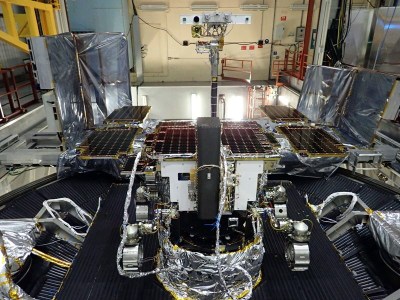At this point, most of us are painfully aware of the restrictions that COVID-19 social distancing protocols have put on our daily lives. Anyone who can is working from home, major events are canceled, non-essential businesses are closed, and travel is either strongly discouraged or prohibited outright. In particularly hard hit areas, life and commerce has nearly ground to a halt with no clear end date in sight.
Naturally, there are far reaching consequences for this shutdown beyond what’s happening on the individual level. Large scale projects are also being slowed or halted entirely, as there’s only so much you can do remotely. That’s especially true when the assembly of hardware is concerned, which has put some industries in a particularly tight spot. One sector that’s really feeling the strain is aerospace. Around the world, space agencies are finding that their best laid plans are suddenly falling apart in the face of COVID-19.
In some cases it’s a minor annoyance, requiring nothing more than some tweaks to procedures. But when the movements of the planets are concerned, a delay of weeks or months changes everything. While things are still changing too rapidly to make an exhaustive list, we already know of a few missions that are being impacted in these uncertain times.
Mars Rover Misses its Flight
Certainly the mission hit hardest at this point is the Rosalind Franklin rover, a joint mission from the European Space Agency (ESA) and Roscosmos. Europe’s first Mars rover, the six-wheeled vehicle was scheduled to touch down on the Red Planet in March 2021 to search for signs of past life. It might seem like that gives teams plenty of time to address any issues, but the orbital mechanics of interplanetary flight make the departure time absolutely critical.
Put simply, Mars makes its closest approach to Earth every two years. While you could technically send a craft to Mars at any time, launches made during this biennial window are the most efficient by far. When Mars is farther away, it obviously takes more energy to put the spacecraft on an intercept trajectory. Depending on the mass of the spacecraft and the launch vehicles available, that may or may not be possible. In any event, the Rosalind Franklin and its launcher were designed to leave Earth during this window, and any deviation outside of it simply can’t be tolerated.
The ESA and Roscosmos teams were reportedly very close to having Rosalind Franklin completed before this window opens in July 2020, but concerns over the parachute deployment system required more testing. Under normal circumstances they likely could have got the issue addressed on time, but due to international travel limitations, it was determined that performing the tests was simply too burdensome. Rather than let the rover launch with a potentially defective parachute, the team has decided to delay until the next available launch window in 2022.
While a push to 2022 is certainly disappointing for everyone involved, it should be said that this isn’t the first time …read more
Source:: Hackaday

